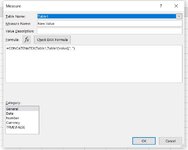let
Source = Excel.CurrentWorkbook(){[Name="Table1"]}[Content],
#"Changed Type" = Table.TransformColumnTypes(Source,{{"Column1", type text}, {"Column2", type text}}),
#"Split Column by Delimiter" = Table.SplitColumn(#"Changed Type", "Column2", Splitter.SplitTextByDelimiter(",", QuoteStyle.Csv), {"Column2.1", "Column2.2", "Column2.3"}),
#"Changed Type1" = Table.TransformColumnTypes(#"Split Column by Delimiter",{{"Column2.1", type text}, {"Column2.2", type text}, {"Column2.3", type text}}),
#"Unpivoted Other Columns" = Table.UnpivotOtherColumns(#"Changed Type1", {"Column1"}, "Attribute", "Value"),
#"Trimmed Text" = Table.TransformColumns(#"Unpivoted Other Columns",{{"Value", Text.Trim, type text}}),
#"Removed Columns" = Table.RemoveColumns(#"Trimmed Text",{"Attribute"}),
#"Removed Duplicates" = Table.Distinct(#"Removed Columns")
in
#"Removed Duplicates"






